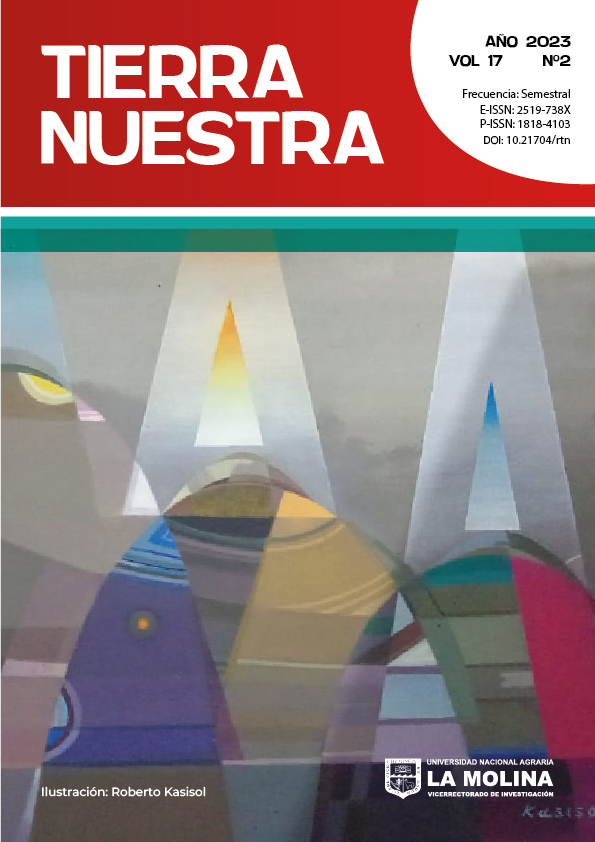Organic coffee cooperativism, fair trade and State: the promises still unfulfilled in the sustainabilityof the Peruvian Amazon
DOI:
https://doi.org/10.21704/rtn.v17i2.1823Keywords:
organic coffee farming, fair trade, yellow coffee rust, central jungle, deforestation, action situation, sustainabilityAbstract
The possibility of coffee farming in the Peruvian Amazon to transform in a sustainable production, has as a condition that it alters the forest to a limited extent and, as far as possible, that it regenerates its ecological functions. For this purpose, it is essential not only to have laws and norms but mainly the determination of social actors to develop in this way when solving practical problems. This research aims to understand the behavior of the main actors, especially organic coffee cooperatives in their interaction with the State and fair-trade organizations in the Perene basin, in the central forest. The research was carried out in a specific situation: a critical phytosanitary juncture caused by the coffee yellow rust fungus (Hemileia vastatrix), in the second decade of this century. It analyzes data from a representative survey, interviews with multiple actors and secondary information. The result, shows that, even when the cooperatives coffee production has certifications according to organic and fair-trade rules (and associate their crops with trees from the inga family), some of the partners reproduce deforestation trends affecting sustainability.
Downloads
References
Chávez, J. (2020). Caficultura orgánica para el comercio justo. Una estrategia posible de adaptación al cambio climático en la selva central. En S. Vargas, y M. Bravo, SEPIA XVIII. Perú: el problema agrario en debate. (Pp. 603-638). Seminario Permanente de Investigación Agraria (SEPIA). https://sepia.org.pe/wp-content/uploads/2021/01/Libro-SEPIA-XVIII-2020-FINAL-PARA-WEB.pdf
Fairtrade International (2013). Documento explicativo del criterio de Comercio Justo fairtrade para organizaciones de pequeños productores. https://files.fairtrade.net/standards/2014-01-15_SPO_Explan_Doc_SP.pdf
Gamarra, D. G., Suárez, G. T., Samaniego, J. C., y Izarra, H. R. (2016). Caracterización y manejo integrado de la roya amarilla del café en selva central del Perú. Convicciones, 2(1), 6-17.
IFOAM. (2005). Normas de IFOAM para la producción y el procesamiento orgánicos. Federación Internacional de Movimientos de Agricultura Orgánica.
INEI. (2012). IV CENAGRO. Censo Nacional Agropecuario. Resultados finales. Instituto Nacional de Estadística e Informática.
INEI. (2021). Perú: compendio estadístico 2021. Instituto Nacional de Estadística e Informática.
Instituto Nacional de Estadística e Informática (INEI) y Servicio Nacional Forestal y de Fauna Silvestre (SERFOR). (2021). Cuenta de bosques del Perú. Documento metodológico. Instituto Nacional de Estadística e Informática y Servicio Nacional Forestal y de Fauna Silvestre. https://www.inei.gob.pe/media/MenuRecursivo/publicaciones_digitales/Est/Lib1811/libro.pdf
Lathrap, D.W. (2010). El Alto Amazonas. RVNA, Chataro Ediciones.
Mazoyer, M. y Roudart, L. (2016). Historias de las agriculturas del mundo. KRK Ediciones.
MIDAGRI (2019). Resultados de la encuesta de productores cafetaleros. Ministerio de Desarrollo Agrario y Riego.
MINAGRI (2006). Reglamento Técnico de la Producción Orgánica. Decreto Supremo Nº 044-2006-AG. Ministerio de Agricultura y Riego.
MINAGRI- SENASA (2014). Plan de Acción Rápida contra la Roya Amarilla del Cafeto y otras plagas priorizadas. Resolución Directoral N.° 064-2014-Ministerio de Agricultura y Riego, Servicio Nacional de Sanidad Agraria.
MINAGRI (2015) Plan Nacional de Renovación de cafetales al 29/05/2015. Ministerio de Agricultura y Riego. https://dokumen.tips/documents/plan-nacional-de-renovacin-de-cafetales.html?page=13
Ostrom, E. (2005). Understanding Institutional Diversity. Princeton University.
Programa de Naciones Unidas para el Desarrollo (PNUD). (2017). Línea de base del sector café en el Perú. [Documento de trabajo].
Torres, A. J, y Bejarano, J. (2016) El medio ambiente. En J. Iglesias de Ussel, A.
Tudela, W. (2014). Adopción de tecnologías orgánicas en productores cafetaleros del Perú: identificación y caracterización. CIES, Universidad Nacional del Altiplano.
Downloads
Published
Issue
Section
License
Copyright (c) 2023 Julio Chávez Achong

This work is licensed under a Creative Commons Attribution 4.0 International License.










